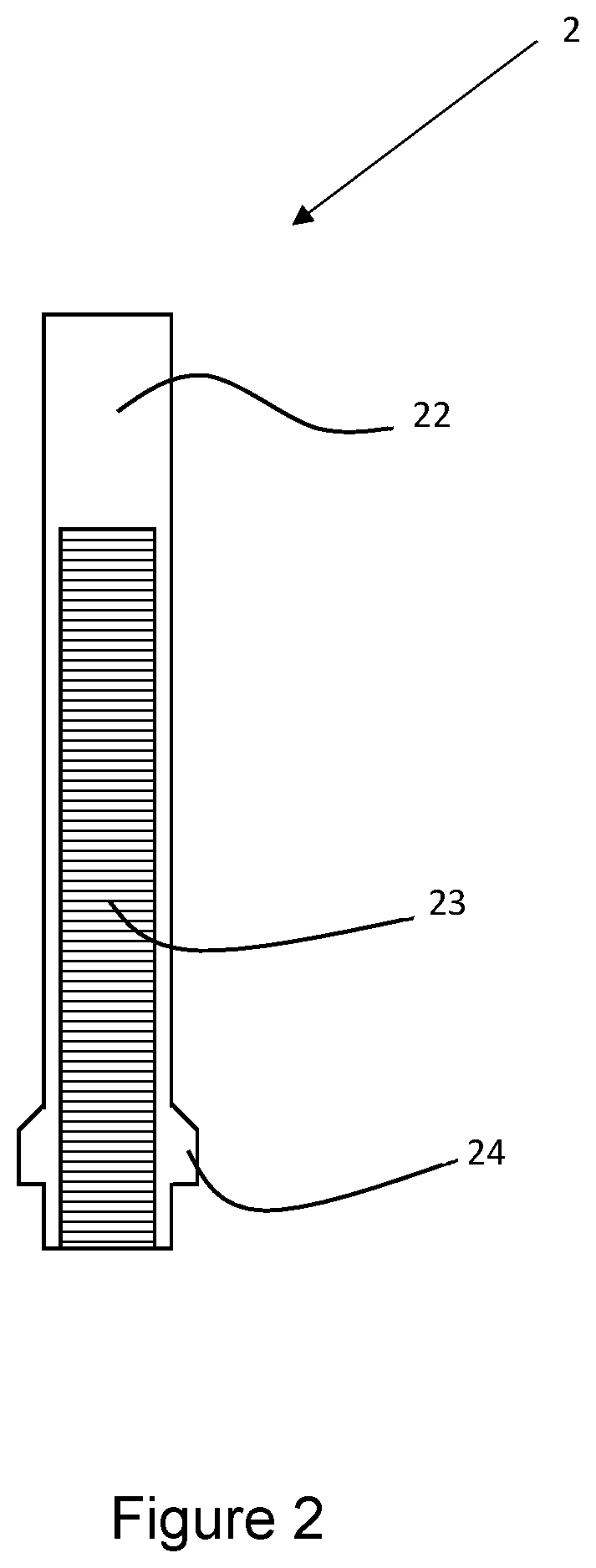Component produced by additive manufacturing
a technology of additive manufacturing and components, applied in the manufacture of sparking plugs, sparking plugs, manufacturing tools, etc., can solve the problems of kerf loss, material loss, complex and expensive processes, etc., and achieve the effect of avoiding additional time-consuming and loss-generating manufacturing processes for the preparation of sectioned wire and its subsequent attachment to a substra
- Summary
- Abstract
- Description
- Claims
- Application Information
AI Technical Summary
Benefits of technology
Problems solved by technology
Method used
Image
Examples
sixth embodiment
[0080]In the invention, the substrate may be an ignition device component, for example an ignition device electrode, for example a spark plug electrode. In other embodiments, the substrate may be any other suitable metal or alloy substrate, for example a lead-out wire of a sensor.
[0081]Additive Manufacturing Process
[0082]The process according to the invention uses methods of additive manufacturing (AM). AM is a technique whereby 2-dimensional layers of material are sequentially laid down and fused or bound together to form 3-dimensianal solid objects. The technique has been developed for the fabrication of plastic, metal and ceramic components for use in aerospace and medical applications.
[0083]The inventors have discovered that AM also offers the possibility to produce ignition device components in an economical way while preserving desirable properties.
[0084]The inventors have also discovered that AM offers the possibility to produce noble metal-containing components in an economi...
embodiment 4
[0142]An alternative embodiment 4 is shown in FIG. 4. The bore 32 of FIG. 3 is replaced with a recess 41 within a modified build plate 41. All aspects of this embodiment are identical to that shown in FIG. 3, except that the recess 41 does not extend through the entire thickness of the build plate 41. Like the embodiment shown in FIG. 3, the position of the substrate 2 is controlled by the presence of an annular ridge 48a, 48b. The axial position of the annular ridge 48a, 48b within the bore 42 is designed such that the upper surface 45 of the substrate 2 is substantially coplanar with the upper surface 46 of the build plate 41.
embodiment 5
[0143]An alternative embodiment 5 is shown in FIG. 5. The bore 32 of FIG. 3 is replaced with a recess 52 within a modified build plate 51, and the bottom of the substrate 2 rests on the floor 52a of the recess 52. The depth of the recess 52 is designed such that the upper surface 55 of the substrate 2 is substantially coplanar with the upper surface 56 of the build plate 51.
[0144]The upper surface 35 of the substrate, which has a circular shape, is coplanar with the upper surface 36, 46, 56 of the build plate. The arrangements shown in FIGS. 3-5 facilitates the deposit of material onto the substrate by AM, and the subsequent formation of an attachment fixed to the upper surface 35 of the substrate 2.
[0145]FIG. 6 shows a spark plug electrode 6 according to the invention. A platinum-group metal attachment 61 has been deposited in stages by a powder bed fusion AM process onto the upper surface of the substrate 2. The attachment 61 is fused to the substrate 2. The component 6 is still p...
PUM
| Property | Measurement | Unit |
|---|---|---|
| particle size | aaaaa | aaaaa |
| length | aaaaa | aaaaa |
| particle size | aaaaa | aaaaa |
Abstract
Description
Claims
Application Information
 Login to View More
Login to View More - R&D
- Intellectual Property
- Life Sciences
- Materials
- Tech Scout
- Unparalleled Data Quality
- Higher Quality Content
- 60% Fewer Hallucinations
Browse by: Latest US Patents, China's latest patents, Technical Efficacy Thesaurus, Application Domain, Technology Topic, Popular Technical Reports.
© 2025 PatSnap. All rights reserved.Legal|Privacy policy|Modern Slavery Act Transparency Statement|Sitemap|About US| Contact US: help@patsnap.com



